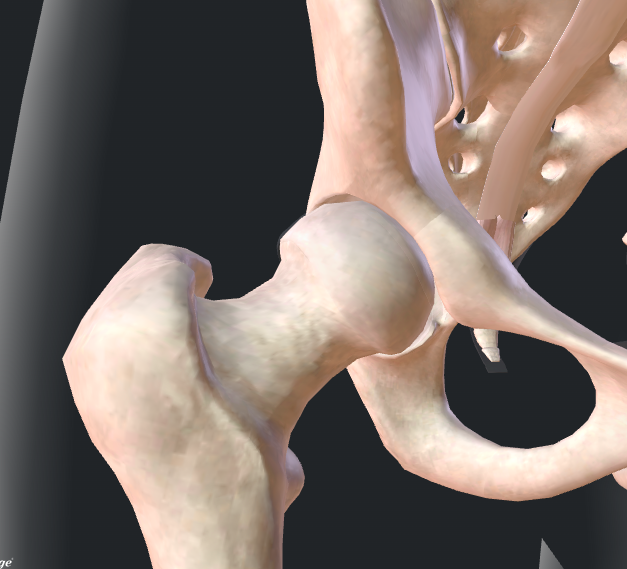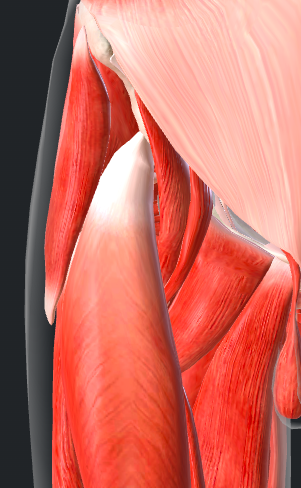
Patient Education: Hip Basics
Education
Hip Basics
The hip is one of the most important weight-bearing joints in the body. It plays a central role in walking, running, sitting, and nearly all lower body movements. Structurally, the hip is a ball-and-socket joint that provides both stability and flexibility, allowing a wide range of motion while supporting the body’s weight.
Understanding the basic structure of the hip joint can help explain how injuries and arthritis develop, and why certain treatments — from physical therapy to surgery — may be recommended.
Bony Anatomy
The hip joint is formed by two main bones:
The acetabulum, a deep socket in the pelvis.
The femoral head, the rounded top of the thigh bone (femur).
The ball-and-socket structure allows for smooth motion in multiple directions. The hip is naturally more stable than the shoulder because of its deeper socket and strong surrounding ligaments. Healthy cartilage covers the surfaces of both the acetabulum and femoral head, helping the joint move smoothly and absorb forces during activities like walking and running.
Other important structures include:
The pelvis, which supports the weight of the upper body.
The greater trochanter, a bony prominence on the femur where important muscles attach.
Soft Tissue Stabilizers
Several soft tissue structures help stabilize the hip:
The labrum is a ring of cartilage that surrounds the acetabulum, helping to deepen the socket and maintain stability.
The joint capsule is a thick layer of connective tissue that surrounds the joint and helps control motion.
Ligaments within the capsule further reinforce stability, especially at the extremes of motion.
The hip relies on these soft tissue structures, along with its bony anatomy, to maintain alignment and prevent dislocation.
Muscle Support
Muscles around the hip provide both movement and dynamic stability:
Gluteal muscles (gluteus maximus, medius, and minimus) stabilize the pelvis and power movements like climbing stairs or getting up from a seated position.
Hip flexors (such as the iliopsoas) help lift the thigh during walking or running.
Hip abductors maintain pelvic balance during walking.
Deep stabilizers like the piriformis and other small muscles around the hip joint assist with rotation and fine control.
Maintaining strength and flexibility in these muscle groups is important for hip health and injury prevention.
Why Hip Mechanics Matter
The hip joint is designed to handle large forces during daily activities. Proper alignment and balanced muscle support help distribute load evenly across the joint. When alignment is off or soft tissue structures are compromised, it can lead to abnormal wear and tear on the cartilage and labrum.
Issues such as hip dysplasia (shallow socket), femoroacetabular impingement (abnormal contact between the ball and socket), and cartilage damage can develop over time and cause pain or limit mobility.
Understanding hip mechanics is essential to understanding both injury prevention and treatment strategies.
Common Hip Conditions
Several conditions can affect the hip joint:
Labral tears: Damage to the cartilage ring that stabilizes the joint.
Femoroacetabular impingement (FAI): Abnormal bone shape causing friction in the joint.
Hip dysplasia: A shallow socket that leads to instability and cartilage wear.
Cartilage injuries and arthritis: Breakdown of the smooth joint surfaces over time.
Muscle and tendon injuries: Strains or tears in the surrounding muscles, like hip flexor or abductor injuries.
Many of these conditions can be treated successfully with physical therapy, activity modification, or surgical procedures to restore hip function and relieve pain.
Conclusion
The hip is a durable, stable joint that allows for both mobility and support during daily activities. Understanding its anatomy and mechanics can help you better understand your condition and the reasons behind specific treatments.
If you’re experiencing hip pain, stiffness, or instability, contact our office for a full evaluation and personalized care plan.



